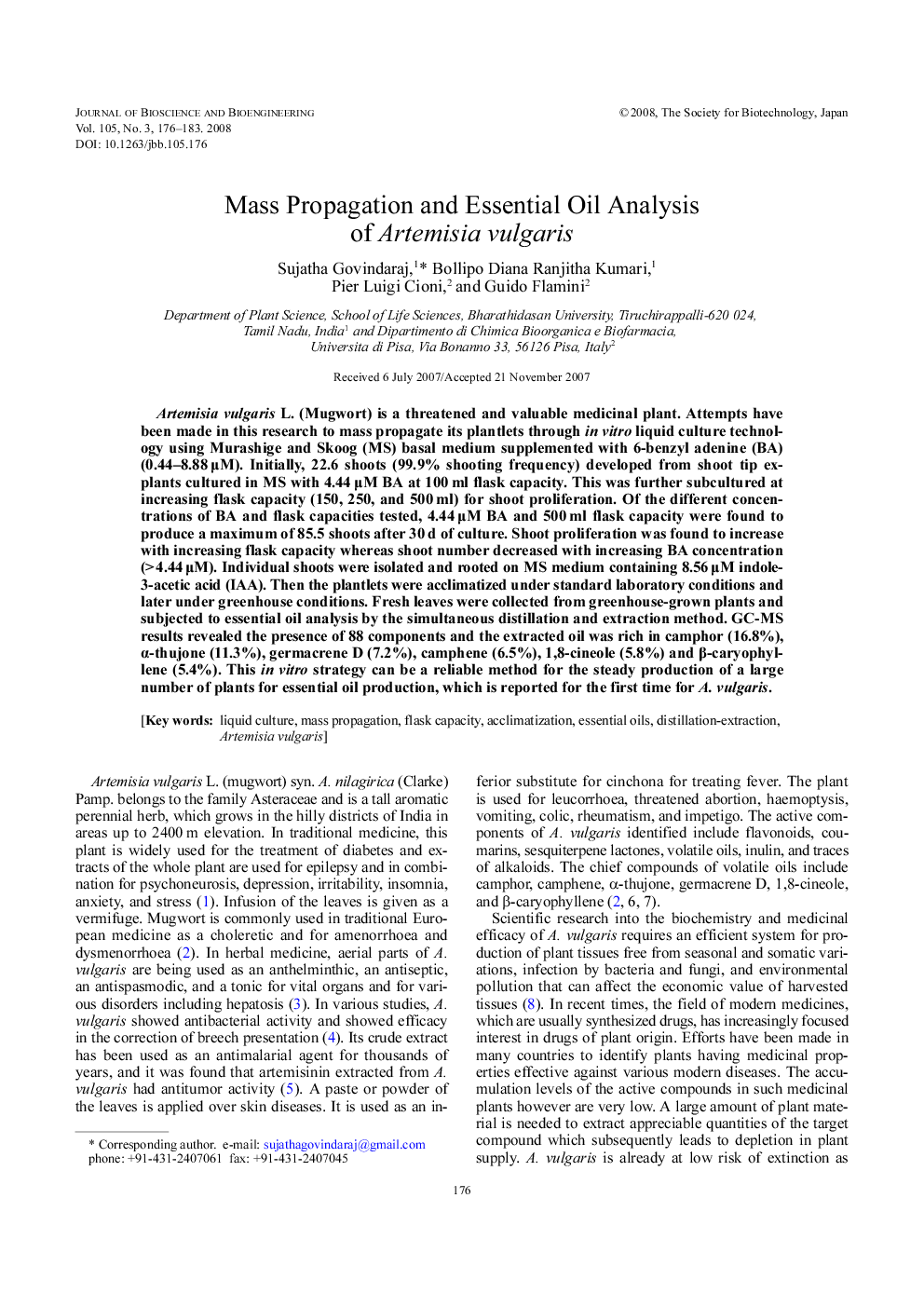| Article ID | Journal | Published Year | Pages | File Type |
|---|---|---|---|---|
| 22408 | Journal of Bioscience and Bioengineering | 2008 | 8 Pages |
Artemisia vulgaris L. (Mugwort) is a threatened and valuable medicinal plant. Attempts have been made in this research to mass propagate its plantlets through in vitro liquid culture technology using Murashige and Skoog (MS) basal medium supplemented with 6-benzyl adenine (BA) (0.44–8.88 μM). Initially, 22.6 shoots (99.9% shooting frequency) developed from shoot tip explants cultured in MS with 4.44 μM BA at 100 ml flask capacity. This was further subcultured at increasing flask capacity (150, 250, and 500 ml) for shoot proliferation. Of the different concentrations of BA and flask capacities tested, 4.44 μM BA and 500 ml flask capacity were found to produce a maximum of 85.5 shoots after 30 d of culture. Shoot proliferation was found to increase with increasing flask capacity whereas shoot number decreased with increasing BA concentration (>4.44 μM). Individual shoots were isolated and rooted on MS medium containing 8.56 μM indole-3-acetic acid (IAA). Then the plantlets were acclimatized under standard laboratory conditions and later under greenhouse conditions. Fresh leaves were collected from greenhouse-grown plants and subjected to essential oil analysis by the simultaneous distillation and extraction method. GC-MS results revealed the presence of 88 components and the extracted oil was rich in camphor (16.8%), α-thujone (11.3%), germacrene D (7.2%), camphene (6.5%), 1,8-cineole (5.8%) and β-caryophyllene (5.4%). This in vitro strategy can be a reliable method for the steady production of a large number of plants for essential oil production, which is reported for the first time for A. vulgaris.
